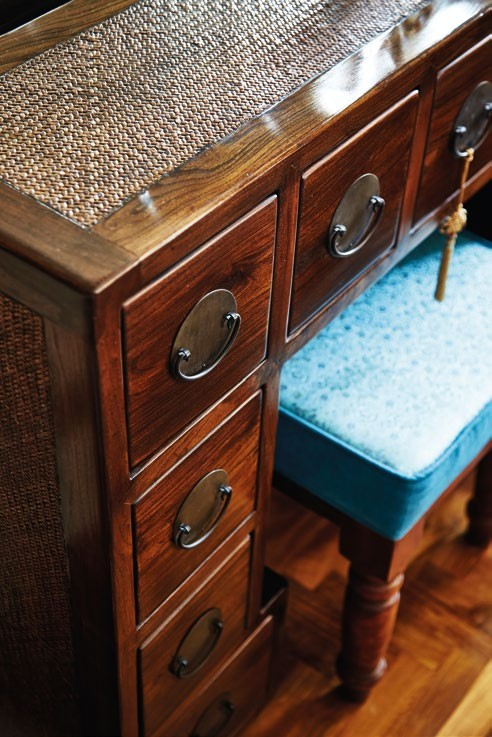We answer your renovation and decorating questions with help from industry experts. E-mail questions to maghomedecor@sph.com.sg.


We answer your renovation and decorating questions with help from industry experts. E-mail questions to maghomedecor@sph.com.sg.

I love sleeping on hotel beds. How can I enjoy a similar experience at home?
For the five-star hotel bed experience at home, take a leaf out of the Four Seasons Hotel’s book. Its sleep experience includes double-walled windows, gasketing around door frames and its centrepiece – the Four Seasons Bed and its 300-thread count bed linen.
The bed is 75cm high, instantly giving you the feeling of loftiness. The hotel worked with Simmons Bedding Company to design a proprietary mattress with a heat-absorbing core that keeps you cool and comfortable throughout the night; the mattress also features pocketed coil motion separation, and a choice of three toppers.
All beds come with a signature topper for classic comfort, but side and back sleepers can request a softer mattress topper to reduce pressure points on hips and shoulders. Front sleepers will enjoy a firmer topper that allows the spine to fall into its natural curve.
Crisp white sheets are a must for the luxury-hotel look. After the mattress topper is laid, cover it with a fitted sheet, followed by a flat sheet. A down comforter (covered in a white quilt or duvet cover) is next. Have at least four pillows for a queen- or king-size bed, and use pillow protectors for a smooth finish. Complete the look with one or two cushions.

What is the difference between rectified and non-rectified tiles?
A rectified tile is made by cutting the tile to size after the firing process. This creates precise 90 degree-angled edges and, as a result, the tiles can be laid with consistent grout joints, explains Rice Fields director Terry Tan.
Non-rectified tiles, on the other hand, have a slight curve on their edges after being pressed in the mould.
“The square edges of rectified tiles mean that the joint width can be approximately 2mm, though the width of the grout will still depend on the tile size and how they are staggered,” he says.
Thin grout lines are a big draw as the surface will look almost seamless when the tiles are laid, if the grout and the tiles are similar in colour. Rectified tiles come in many sizes, ranging from 150mm to 3m.
Rectified tiles cost about 10 per cent more than non-rectified ones.

I own a teak cabinet and bed, and would like to change the wood stain. What do you advise?
Many solid and sound wooden furniture pieces can be given a new look just by changing the colour of their wood.
“We strip the piece down to a natural finish or do a paint finish,” says David Ditcham of Barossa Furnishings, who receives many requests to revamp vintage wooden furniture.
To re-stain the piece, he sands it down to its natural timber shade using various grades of sandpaper; this is done using both electric sanders and by hand.
Then, he applies the desired stain using a soft cloth, lets the piece dry, and applies up to five coats of varnish on top of the new stain. According to David, painting teak furniture is difficult work, as teak “has naturally high levels of oil, and lighter paint tones do not take well”.
Opt for darker colours; the first step is the same: Strip existing varnish through sanding or use a paint stripper for very thick varnish. Apply paint primer and allow to dry. Spray on one coat of paint, dry and sand lightly before applying the second coat.

My lights look rather grubby after three years. How should I clean them?
Dirty light fixtures don’t just look bad, they also reduce the lamp’s brightness, and waste energy, so it’s a good idea to clean them annually.
Philippe Limes, the CEO of Helpling, an online platform connecting customers with independent domestic cleaners, details how different types of fixtures should be treated.
For any light fixture, first, turn off the power and allow the bulbs to cool down. For lampshades, remove loose dust with a lint roller, then wipe the interior and exterior with a dry microfibre cloth. Fill a basin with lukewarm water and add a dash of laundry detergent.
Remove the shade from the lamp and submerge it. Rinse with warm water. Repeat this dipping process until the water runs clear. Don’t worry if the fabric shade starts to lose its elasticity; it will spring back to its original shape when dry. Place it in the sun to dry.
To clean glass pendants, remove the bulbs, then the glass shade. Soak the shade in a solution of water and dishwashing detergent. Remove and dry with a soft cloth. Finally, wipe the bulbs with a damp cloth and leave to dry.
For chandeliers, remove all bulbs. Make a solution using a squirt of dishwashing detergent, ¼ cup white vinegar and three cups of water. Spritz the chandelier, and dry with a soft microfibre cloth.























